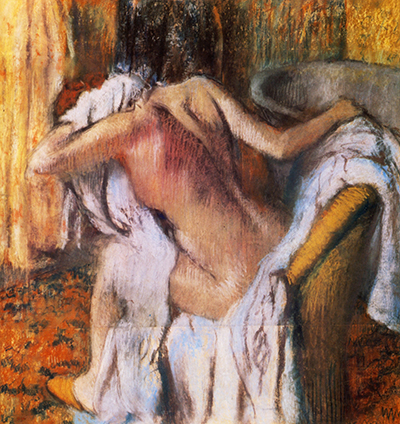The colours used by Edgar Degas in his pastels were both bright and bold, providing a summary of some of the qualities of the impressionist artists.
His prolific use of pastels meant this element of his drawing output should be covered separately, which we do so here.
Variety of mediums
Edgar Degas had several themes that he made use of in each of his favoured art mediums, namely oil painting, graphite and charcoal drawing, sculpture and pastels.
Served as studies and standalone artworks
In some cases his drawings would be preparation for later paintings, but in many cases they were standalone artworks in their own right. The artist would travel around with a collection of sketchbooks in which he would construct drawings to varying levels of completeness as well as making notes on his thoughts at the time.
Specialised in pastels across an extended period
The precise timeline surrounding this artist's use of pastels has been narrowed down to a period from the late 1870s to just after the turn of the century.
Degas was a renowned draughtsman who appreciated the abilities of pastels to lift his charcoal work with a burst of bright colour and perhaps fill the gap between drawings and fully fledged paintings. Degas would have to consider his application of pastel when adding over charcoal as a particularly strong use of it would completely cover any original detail.
When surveying the full output of Degas pastels we are able to see changes across his career in both the style that he used and also the content that he depicted. France was a hive on new artistic ideas at this time and some of this would have influenced his direction, such as with a more spontaneous construction of form.
Transitioned from one theme to the next
The changes in content in his pastels would mirror his other mediums, as he went through different phases of inspiration. There were, of course, the ballerinas and the scenes from horse races. Additionally, he would depict a rougher side of parisien life from local brothels and cafes (see absinthe). There were then the depictions of woman in varying levels of undress as they preparared for the day ahead.

Ballet Dancers in the Wings

Portrait of Edmond Duranty

Jockeys in the Rain

Laundresses

At the Jeweller's

Preparation for the Class

Dancers on a Bench

Dancer

Three Dancers



























 Edgar Degas.jpg)
 Edgar Degas.jpg)




 Edgar Degas.jpg)



